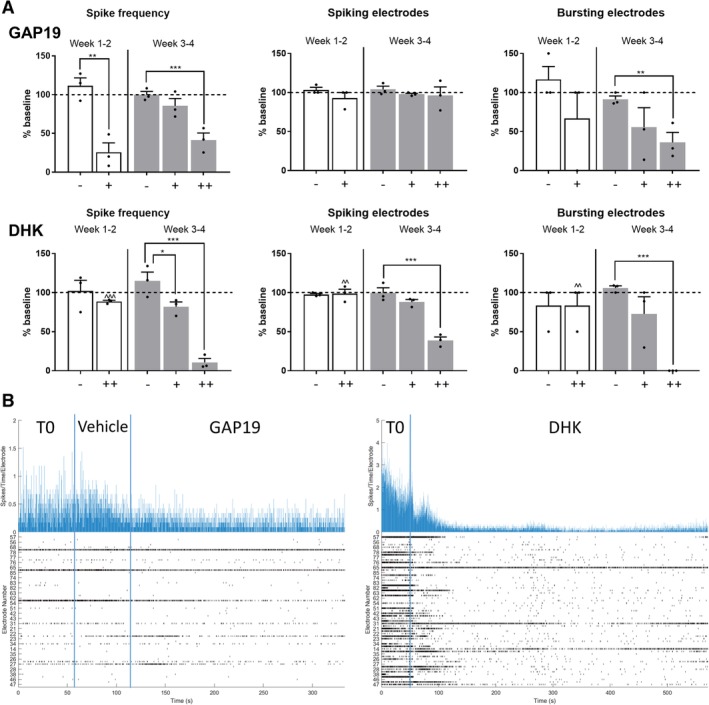Figure 7.

Compounds targeting astrocytes affect human‐induced pluripotent stem cell‐derived motor neurons (hiPSC‐MN) electrophysiology as recorded by multielectrode array (MEA). (A): Effects of GAP19, a specific Cx43 hemichannel blocker, on neuronal activity, in hiPSC‐MN/‐A cocultures, over time (week 1–2 after plating—white bars, and week 3–4 after plating—gray bars; −, vehicle; +, 34 μM; ++, 340 μM). Changes on hiPSC‐MN electrophysiological activity after the addition of DHK (−, vehicle; +, 50 μM; ++, 300 μM). The electrophysiological parameters were normalized to the baseline activity recorded for 1 minute (dashed line; mean of n = 3 independent experiments per drug and per time point; * or ∧, p < .05; ** or ∧∧, p < .01; *** or ∧∧∧, p < .001). (B): Representative MEA raster plots of electrophysiological activity following the addition of GAP19 (left) and DHK (right). Abbreviation: DHK, dihydrokainic acid.
